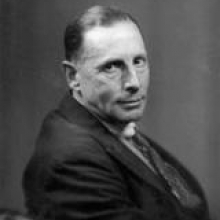Australia has consistently punched above its weight with respect to medical research. It has also been a reliable source of influential Anatomy Professors, including Grafton Elliot Smith at University College London, and Raymond Dart at The University of the Witwatersrand. I had previously erred in assuming that the colorful Frederic Wood Jones was also Australian, but although he was Professor of Anatomy at two medical schools in Australia, first at Adelaide (1919-1927) and then later in Melbourne (1930-1937), he was a fellow Londoner. He was born in Hackney and his parents, like mine, moved out to Enfield in what was then Middlesex, a now defunct county just to the north of London. We would have even gone to the same school, Enfield Grammar, but because I did not do well enough in the qualifying exam known as “11 plus”, I failed to make the cut! We both went to London medical schools, Wood Jones to The London Hospital Medical College and me to The Middlesex Hospital Medical School, but since then both schools have been swallowed into larger academic units, the LHMC into Queen Mary College and the MHMS into University College London. It was at the LHMC that Wood Jones was taught by Arthur Keith, and despite not always agreeing the two men became intellectual soul mates and fast friends.
After qualifying as a doctor in 1904 Wood Jones took the unusual step of working as the Resident Medical Officer at a telegraph station on the Cocos Keeling Islands, a remote atoll in the Indian Ocean, that is under Australian control. He spent a productive year on the islands. Not only did his report, Corals and Atolls, eventually earn him a D.Sc., but when he was on the islands he met, and eventually married, Gertrude, who was part Malay. No sooner had he returned to England in 1906 Wood Jones was off again, this time to Nubia. Grafton Elliot Smith, who was the Professor of Anatomy in Cairo, was mounting what amounted to a rescue “excavation” to salvage what could be salvaged from the waters that were rising behind the newly constructed Aswan dam. The Archaeological Survey of Nubia documented and rescued many hundreds of burials. By all accounts Wood Jones and Elliot Smith worked well together in Nubia, but before long they were at loggerheads about topics we would now put under the headings of human biology and primatology. In 1915 Wood Jones was appointed to his first professorship at what was then called The London School of Medicine for Women. Later it admitted men as well as women, and its name changed to the Royal Free Hospital Medical School, and it is where, much later, both John Napier and Michael Day were faculty members.

It was around this time that Wood Jones developed his arboreal theory of human evolution, otherwise known as the Tarsian Hypothesis. His hypothesis, which rejected the great apes as prototypes of modern humans, instead focused on the tarsier as a more likely progenitor, and in 1916 in Arboreal Man Wood Jones set out the argument for his unconventional hypothesis. Despite assaults from his peers, including his erstwhile colleague and supporter Elliot Smith, Wood Jones stuck to his guns, and he continued to espouse the tarsier as a human ancestor in 1929, in Man’s Place among the Mammals, and as late as 1948, in Hallmarks of Mankind. It is difficult to understand how such a good anatomist could dismiss the evidence accumulated by T.H. Huxley and others that links modern humans with the African apes.
After his stint in Melbourne, Wood Jones moved to the Chair of Anatomy in Manchester for the duration of WWII. He spent the next phase of his career, from 1945-9, as the Sir William Collins Professor of Anatomy at the Royal College of Surgeons of England, and after his retirement he continued as the Honorary Curator of the Hunterian Collection until his death in 1954. His secretary, Jessie Dobson took over responsibility for cataloguing the collection, and she was still engaged with that task when I first visited the College in the 1960s. Arthur Keith and Le Gros Clark both contributed fine obituaries of Wood Jones. Keith’s is a particularly affectionate and deeply personal remembrance.

Wood Jones was a complex, brilliant and talented mix of pioneer, polymath and throwback. He was an unabashed Lamarckian, yet it could be justly claimed that his work to establish a sanctuary on Kangaroo Island off the coast of South Australia made him one of the pioneers of conservation. He was also way ahead of his time in his ardent advocacy for Aboriginals. He was a charismatic lecturer – so many wanted to attend his valedictory lecture in Melbourne that he had to give it in Melbourne Town Hall - a fine water-colorist, and the author of children’s books.
They don’t make Professors of Anatomy, or indeed of anything else, like that any more.
--
Biographical information about Wood Jones comes from Ross L. Jones’ Humanity’s Mirror and from this article.


